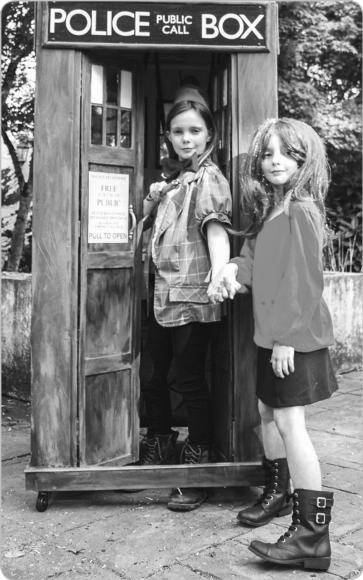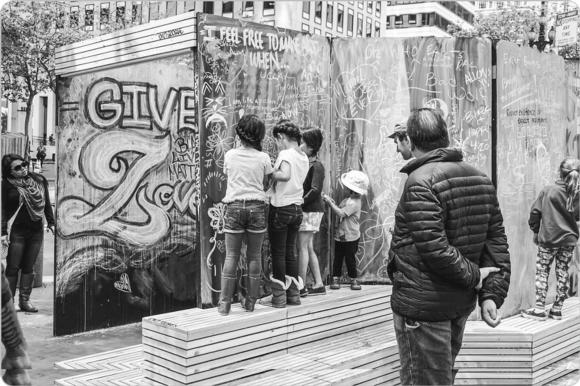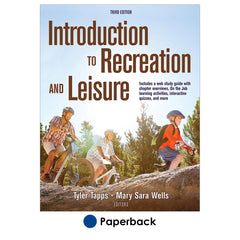Benefits of Arts and Cultural Recreation Opportunities
This is an excerpt from Introduction to Recreation and Leisure 3rd Edition With Web Study Guide by Tyler Tapps & Mary Wells.
Arts and cultural activities may initially appear to be in competition with social service providers and programs. However, individual and group-based arts and cultural activities provide benefits in their own right and offer additional support for health and human service programs and the social needs of mental, physical, and occupational support by providing skill development and social connection. Studies have shown multiple benefits associated with personal, social, economic, and environmental leisure (Arts Midwest & Metropolitan Group, 2015; Canadian Parks Council, 2011; Ontario Ministry of Tourism & Recreation, 1992). For individuals, such rewards may be the personal pleasure of the immediate experience, individual growth, social connection, or skill building through involvement in focused learning. For communities, we find increases in economic strength, social identity, and shared values.
Individual Benefits of Arts and Culture
Examining how people in a democratic society choose to spend their discretionary time has been of interest to recreation professionals and arts managers whose jobs are to develop and produce arts and cultural programs. It is important to understand the expected benefits that people realize during leisure engagement. Feelings of individual freedom and choice characterize leisure and are central to the nature of creative activity (Carpenter, 2013; Kelly & Freysinger, 2000). Further, the arts add excitement and joy to life, and arts-related experiences can create an understanding and appreciation of the arts throughout one's life (Orend, 1989). By offering programs in crafts and culinary arts, music and dance, poetry and weaving, hiking and tree climbing, parks and recreation professionals provide people with the best opportunities for enjoyment through creative endeavors, quiet contemplation, and adventuring.
Benefits realized from arts and cultural participation vary by individual and type of experience (Carpenter, 2013). Further, repeat participation in certain leisure activities is due, in part, to the unique benefits people receive from participation. Though many people might participate in the same experience, such as playing in a community jazz band, it produces different benefits for different people. One person might relish the music while another might delight in the friendships that jamming with others facilitates.

Dr. Who cosplay fans. This family participated in a regionally sponsored cosplay contest. They designed and built the costumes and props because of their personal interest and fan practices around the televised series and character, Dr. Who. The intensive creative process and cleverness of the final products were rewarded through recognition on social media sites and at a special event. Most important, they were individually satisfied with the labor, time, and skill they applied in development of this work.
Photo courtesy of Michelle McKeon.
An example of joy in arts participation is cosplay (costume play), which can be seen at Comic-Cons (comic conventions), Harry Potter book releases, Star Wars nights at sport events, or live symphony performances of a film score while the film plays. Though anyone can cosplay anywhere, such specific events invite artists, fans, academics, and other interested participants to engage with contemporary and historic impacts of popular culture and related art forms (Comic-Con International: San Diego, 2016). Cosplayers design, create, and present their costumes because they enjoy it just as other individuals enjoy leisure activities such as sports, hobbies, or needlework. Events such as Comic-Con also host audiences who will very likely appreciate the skill, time, and attention taken to create such costumes and who will celebrate individual interests.
Social Benefits of Arts and Culture
Together with individual benefits of arts and culture in leisure settings, research shows us that there are important social benefits. For example, Driver and Burns (1999) suggested that social benefits of involvement in arts and cultural experiences include cultural and historical awareness and appreciation; social support; understanding and tolerance of others; community integration; social bonding, cohesion, and cooperation; and reciprocity and sharing. Additional social benefits that contribute to community building include reduction of alienation or antisocial behaviors for youth and adults, promotion of ethnic and cultural harmony, bonding for families and neighbors who participate in recreation together, community pride in the quality of the local leisure programs and facilities, and opportunities to increase civic engagement and shared management and ownership of local resources (Ontario Ministry of Tourism & Recreation 1992). Next, we discuss some ways that these social benefits are offered through organizations, groups, and communities.
Group Benefits of Arts and Culture
Professionals in recreation and leisure have recognized individuals' desires to participate in arts and cultural activities and other recreation and leisure activities with friends, family, and other community networks (Arnold, 1978). This notion has been further corroborated by national U.S. data suggesting that 73 percent of study participants identified the opportunity to "socialize with friends or family" as the top motivator for attending arts events and activities (National Endowment for the Arts, 2015, p. 10). Beyond attendance and participation with friends and family, volunteering in arts and cultural activities provides direct group benefits.
Volunteering is a serious leisure pursuit that has gained increased importance in arts and cultural agencies (Stebbins, 1992; Stebbins & Graham, 2004). Stebbins (1992) found that serious leisure is the systematic and determined pursuit of an activity by an individual or group of amateurs, hobbyists, or volunteers. Volunteering affects arts and cultural organizations and participants because volunteers donate hours and expertise to advance an organization's mission and programs and volunteering serves as a leisure experience for the individual and for groups who volunteer together around a purpose or cause (Carpenter, 2013). In particular, Stebbins (2005) explored the concept of project-based leisure contributing an understanding of group behavior and benefits. Group project-based serious leisure provides clear purpose, drive, and social connections; an example of this can be found at Lotus World Music Festival in Bloomington, Indiana, which hosts more than 600 volunteers. The connections and sense of contribution to the larger Bloomington community maintain cohesive group behavior that then generates successful outcomes for the volunteers and for the festival. Without the support of these annually consistent project-based volunteers, Lotus would not hold the same strong national and international reputation or local and regional educational and economic collateral.
Community Benefits of Arts and Culture
Arts and cultural recreation experiences are socially significant beyond the friend, family, or volunteer group benefits previously described. Shared recreational pursuits are based on kinship, friendship, special interests, work, and neighborhood contexts (Gray, 1984) in which people build a sense of community with others. Community benefits of arts and culture in recreation and leisure abound. For example, researchers in Philadelphia found that local cultural activity has a dramatic influence on neighborhoods (Stern & Seifert, 2002). Their findings showed that cultural activity creates positive social environments and results in greater civic participation and gradual residency growth; reduction of neighborhood, ethnic, and class divisions; and lower truancy, delinquency, and poverty rates. Stern and Seifert (2015) further found that sense of community values and connection, school effectiveness, and greater safety can arise with arts and cultural offerings in public settings. This can be seen when arts, recreation, and community come together around creative placemaking, which is when public, private, not-for-profit, and unincorporated community sector entities strategically partner and plan to shape the economic, physical, and social character of a neighborhood, town, city, or region around arts and cultural activities (Markusen & Gadwa, 2010).
A unique example that highlights the social and economic community benefits of creative placemaking is the Arts Foundation for Tucson and Southern Arizona (Arts Found Tucson), formerly known as the Tucson Pima Arts Council. This area in southern Arizona has a wide range of ethnic groups and is near the border with Mexico. Since 2008, Arts Found Tucson's people, land, arts, culture, and engagement (PLACE) initiative has sought to enhance the region's historical and contemporary assets as well as systemic problems of imbalanced cultural groups and geographic landscapes through creative expression opportunities, increased arts education, economic development in the creative sector, and changes in public cultural policy. This focus has ultimately built a strong identity and sense of place for the community (Stern & Seifert, 2009; Tucson Pima Arts Council, 2013b). Collaborating with artists and arts organizations, parks and recreation programs, government entities, private foundations and businesses, volunteers, and citizens in specific neighborhoods, PLACE has facilitated social cohesion, belonging, and distinct cultural and community identity based in a Mexican - American borderland and desert territory (Tucson-Pima Arts Council, 2013a, 2013b) that is continually shifting. The PLACE initiative has led to successful outcomes for employment and tourism, increased civic engagement, high rates of arts-related businesses and spending on arts and cultural endeavors, improved property values and public safety, and other positive economic effects for the region.
Festivals are another form of creative placemaking. Festivals bring a temporary sense of social connection, identity, and value to a specific geographic location or cultural group. Arts managers and parks and recreation agencies often produce large-scale public festivals, and many hold art fairs and festivals as part of significant promotional and fundraising efforts. Participants' beliefs about the social benefits of a festival may include an enhanced image of the community, a sense of community well-being, or the ability to have a variety of cultural experiences. These positive effects can be weighed against social costs such as reduced local community privacy, overcrowding, and increased noise levels during the festival (Delamere, 2001; Delamere & Rollins, 2008; United Nations Environment Programme, n.d.). Whether at large-scale festivals such as Coachella or Burning Man or art fairs in local parks, socially responsible tourism must be practiced when developing festivals. The local host community's identity and values, economic operations and benefits, and social services must also be recognized and supported (International Labor Organization, 2013). Building relationships between festivals and their host communities brings health and well-being for individuals, the environment, and communities.

Children and adults interact with a pop-up chalk wall, which is a temporary interactive creative space for sharing ideas and artwork that was created by Youth Art Exchange members to inspire conversation with and creation by passersby and neighbors on a street corner in San Francisco.
Photo courtesy of Youth Art Exchange.
Learn more about Introduction to Recreation and Leisure, Third Edition.
More Excerpts From Introduction to Recreation and Leisure 3rd Edition With Web Study Guide

Get the latest insights with regular newsletters, plus periodic product information and special insider offers.
JOIN NOW
Latest Posts
- Assessment of the Atlanto-Axial Joint (AAJ)
- Side-bending Muscle Energy Technique (MET) for the cervical spine
- Ligaments of the vertebral column in the cervical spine
- What are exercise snacks?
- Create positive muscle-strengthening experiences for those with excess weight
- Empower health behavior change through effective communication and motivational interviewing


